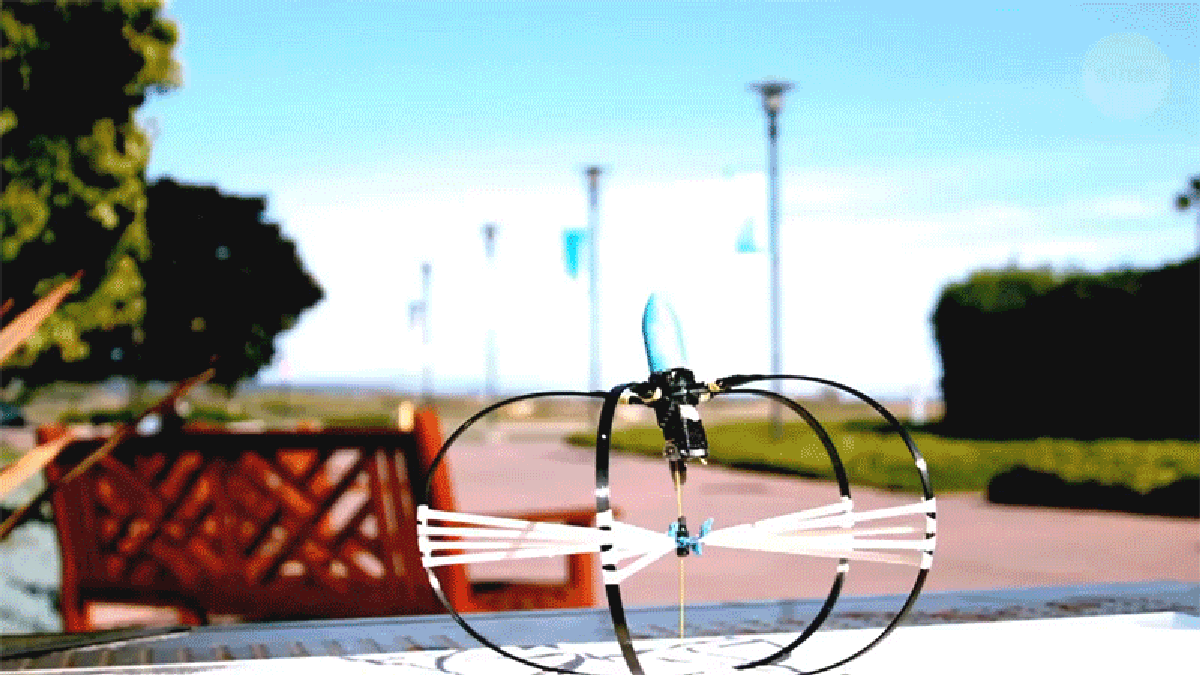
Although it’s tragically lacking a cool name, the UC Santa Barbara researchers have developed a simple robot that uses a mechanical advantage known as “work multiplication.” A tiny motor is paired with much larger springs made of carbon fiber strips that act like an archer’s bow. As the motor slowly reels in a strong filament, the bows are compressed and squished while at the same time a series of rubber bands wrapped around the bows are stretched, adding even more power while also increasing the strength of the carbon fiber so that it doesn’t break.
The robot’s jumping performance is believed to have reached the maximum possible performance of the materials used. When the tension in the bows is released, the robot accelerates from 0 to 60MPH in just nine milliseconds, exerting an acceleration force of 315g (most humans can’t endure more than 9gs) and leaping to a height of almost 100-feet. As the bows straighten out and release their energy, they also transform the robot’s shape into a sleek aerodynamic arrow improving its speed, but since it’s so lightweight, it falls back to Earth afterward without destroying itself in the process.
Are there practical applications to a robot that can easily outjump Winnie the Pooh’s Tigger? Simply leaping over rough terrain and obstacles is a lot easier for a robot than trying to roll or walk across it, and the robot’s abilities would be further improved if deployed on other moons and planets with less gravity than Earth’s. The researchers estimate the robot in its current form could reach heights of over 400 feet and clear distances of half a kilometer on the moon thanks to the reduced gravity and lack of atmosphere. It could capture similar imagery during a leap as the flying Ingenuity probe currently does on Mars, but without the weight and complexity of a helicopter that needs to land as softly as it takes off.
